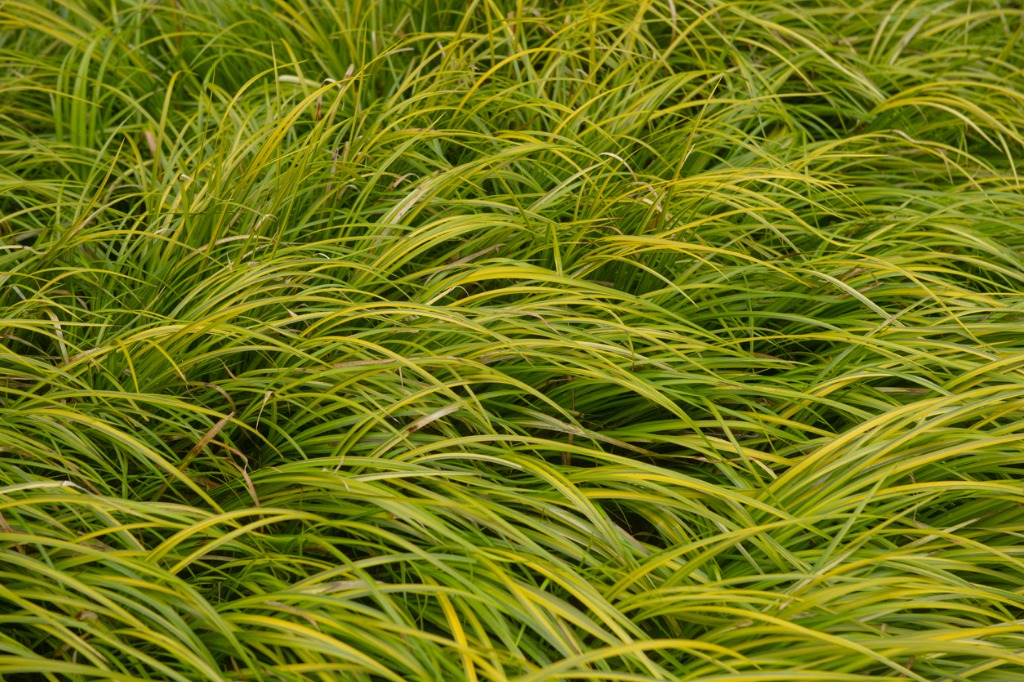Grassy-leaved sweet flag
(Acorus gramineus)

Description
Acorus gramineus, commonly known as Japanese sweet flag, Japanese rush, grassy-leaved sweet flag, and grass-leaf sweet flag,is a botanical species belonging to the genus Acorus, native to Japan, Korea, and eastern Asia. The plant usually grows in wetlands and shallow water. This shrubby plant's long, narrow, slightly curved leaves may grow to 30 cm (12 inches) in height. It can grow fully or partially submerged, or in very moist soil, but it will usually only flower when at least partially submerged. Var. pusillus has slightly shorter, more rigid glossy green leaves, while var. variegatus has longer leaves streaked with yellow. Acorus gramineus spreads aggressively by rhizome, creating a nearly-seamless groundcover where conditions are favorable, and it is frequently used around the edges of ponds and water gardens, as well as submerged in freshwater aquaria. It can be propagated by dividing the fleshy underwater rhizome and planting the base in shallow water. Acorus is a genus of monocot flowering plants. This genus was once placed within the family Araceae (aroids), but more recent classifications place it in its own family Acoraceae and order Acorales, of which it is the sole genus of the oldest surviving line of monocots. Some older studies indicated that it was placed in a lineage (the order Alismatales), that also includes aroids (Araceae), Tofieldiaceae, and several families of aquatic monocots (e.g., Alismataceae, Posidoniaceae). However, modern phylogenetic studies demonstrate that Acorus is sister to all other monocots. Common names include calamus and sweet flag. The genus is native to North America and northern and eastern Asia, and naturalised in southern Asia and Europe from ancient cultivation. The known wild populations are diploid except for some tetraploids in eastern Asia, while the cultivated plants are sterile triploids, probably of hybrid origin between the diploid and tetraploid forms. The inconspicuous flowers are arranged on a lateral spadix (a thickened, fleshy axis). Unlike aroids, there is no spathe (large bract, enclosing the spadix). The spadix is 4–10 cm long and is enclosed by the foliage. The bract can be ten times longer than the spadix. The leaves are linear with entire margin.
Taxonomic tree:







